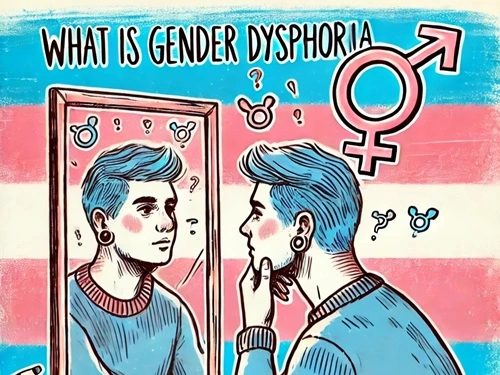Gender dysphoria is a complex and often misunderstood condition affecting many people worldwide. Understanding the nuances of gender identity and the challenges faced by those experiencing gender incongruence can foster greater empathy and support for individuals on their journey.
Table of Contents
What is Gender Dysphoria?
Gender dysphoria refers to the distress a person feels due to a mismatch between their gender identity and the sex assigned at birth. This incongruence can lead to significant emotional and psychological challenges.
People whose gender identity does not align with their assigned gender may experience a range of emotions, including anxiety, depression, and a strong desire to transition to the gender they identify with. The American Psychiatric Association defines gender dysphoria in the Diagnostic and Statistical Manual of Mental Disorders (DSM-5), emphasizing the need for appropriate treatment and support.
Symptoms of Gender Dysphoria
The symptoms of gender dysphoria vary widely among individuals. Common signs include a strong desire to be treated as a gender different from one’s sex assigned at birth, a deep discomfort with one’s primary or secondary sex characteristics, and a significant distress in social, occupational, or other important areas of functioning.
Children with gender dysphoria may express a desire to wear clothes typical of the opposite gender, insist they are a different gender, or show strong preferences for activities and toys typically associated with the other gender. Adolescents and adults may experience severe anxiety and depression, often seeking gender-affirming treatments to alleviate their distress.
Understanding Gender Incongruence
Gender incongruence, a broader term, encompasses any mismatch between one’s experienced gender and the gender assigned at birth. It includes individuals who may not necessarily experience distress or seek medical intervention but still identify with a gender different from their assigned sex.
Gender incongruence highlights the diversity of gender identities and expressions. It acknowledges that not everyone fits neatly into the binary categories of male or female. Recognizing and respecting this diversity is crucial for fostering an inclusive society.

Treatment for Gender Dysphoria
Treatment for gender dysphoria is highly individualized and may include psychological support, hormone therapy, and surgeries to align one’s physical appearance with their gender identity. Mental health professionals play a vital role in helping individuals explore their gender identity and navigate the complexities of their emotions.
Psychotherapy can provide a safe space for individuals to express their feelings, address societal rejection of gender identity, and develop coping strategies. Hormone therapy and surgical options, such as facial feminization surgeries and gender-affirming surgeries, can help individuals align their physical appearance with their gender identity, significantly improving their mental well-being.
Gender Affirming Care
Gender affirming care is essential for the well-being of transgender and gender diverse people. This approach includes respecting and acknowledging an individual’s gender identity, providing access to appropriate healthcare services, and supporting their social transition.
Affirming one’s gender identity can reduce feelings of gender dysphoria and improve overall mental health. It involves using preferred names and pronouns, creating inclusive environments, and advocating for policies that protect the rights of transgender and gender diverse individuals.
The Role of Mental Health Professionals
Mental health professionals are crucial in diagnosing and treating gender dysphoria. They use criteria outlined in the Diagnostic and Statistical Manual of Mental Disorders and work closely with individuals to develop personalized treatment plans.
These professionals help individuals explore their gender identity, address any mental health issues associated with gender dysphoria, and provide guidance on medical and social transition options. Their support is vital for individuals to live authentically and confidently.

Challenges and Stigmas
Despite progress, transgender and gender nonconforming people still face significant challenges and stigmas. Societal rejection, discrimination, and lack of access to healthcare can exacerbate feelings of gender dysphoria and negatively impact mental health.
Efforts to educate and raise awareness about gender dysphoria and gender incongruence are essential. Promoting acceptance and understanding can help reduce stigma and create a more inclusive society where everyone feels valued and respected.
Gender Dysphoria and Gender Incongruence: Conclusions
Understanding gender dysphoria and gender incongruence is crucial for fostering empathy and support for those experiencing these challenges. By promoting awareness, providing appropriate treatment, and advocating for gender-affirming care, we can create a world where everyone can live authentically and with dignity.


